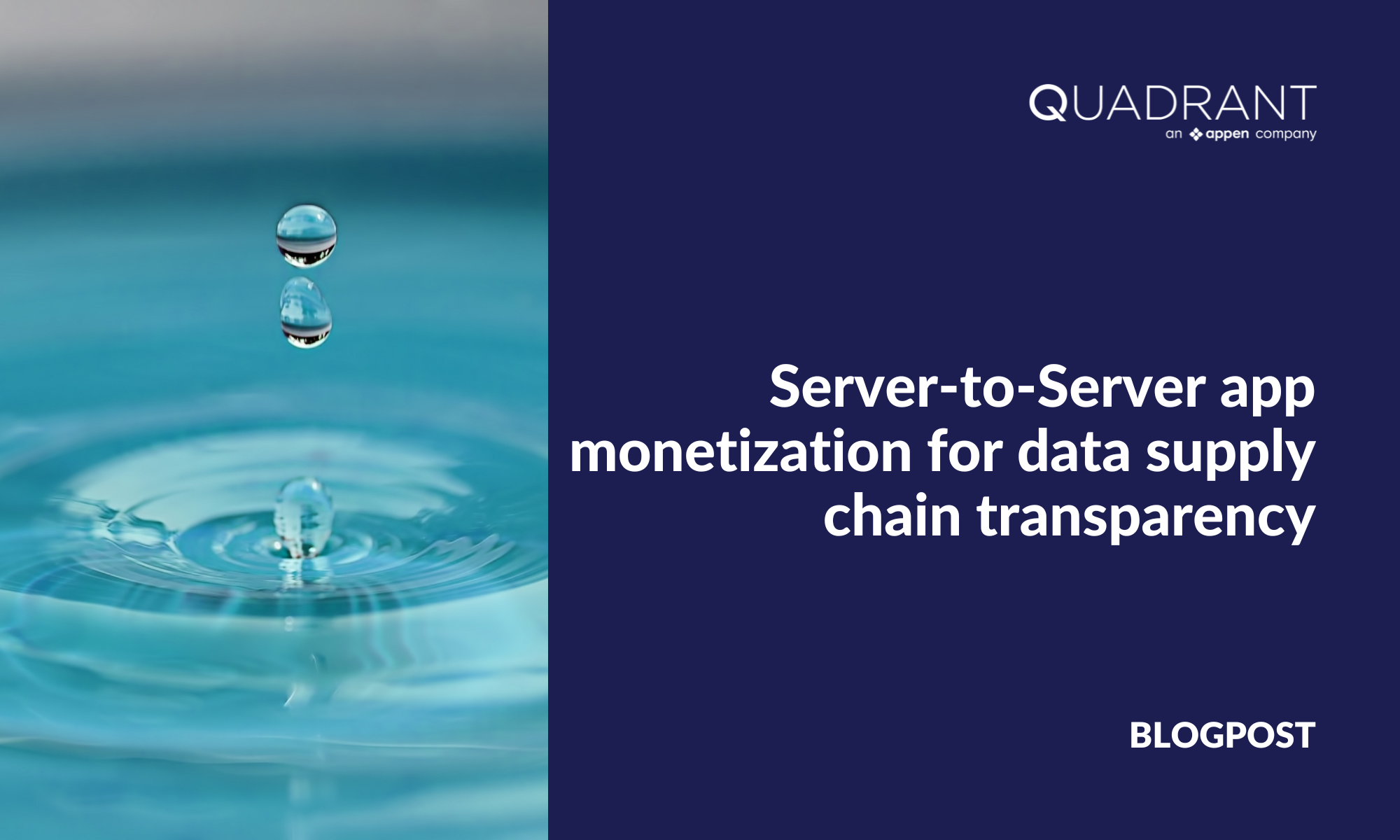The location data industry is characterised by opaque supply chains, making it challenging for buyers to procure high-quality datasets. Quadrant’s mission to instill transparency into the industry starts with how and where we source the data. We have been successfully working on acquiring data right where it is created, incentivizing developers to ethically monetize their mobile apps.
One way of doing this is SDK integration, which we have covered in detail. The other, increasingly popular method is Server-to-Server (S2S) integration; in this piece, we give readers a peek behind the curtain so that they can understand how S2S works.
A lack of transparency in location data supply chains has paved the way for fraudulent, duplicated, incomplete, and unconsented records to become ubiquitous. As a result, businesses cannot derive high-quality insights from location intelligence to improve their performance.
To become the go-to location data provider, we have implemented measures at every level of the supply chain to mitigate these problems.
- An increasing portion of our data is coming directly from mobile apps through S2S integrations or our SDK, so that there is no ambiguity about our sources.
- We execute rigorous quality assessment through proprietary algorithms to make sure the final datasets we provide our customers are of the highest possible quality.
- We only source user consented data to ensure compliance with stringent data privacy regulations like the EU’s GDPR.
- We allow users to track and validate the provenance and consent of data on our very own blockchain, Quadrant Protocol.
Quadrant’s preferred data collection method:
Server-to-Server (S2S) Integration
Server-to-Server integration is a mechanism that transfers data from an app publisher’s existing server-side infrastructure to a buyer, in this case Quadrant. Similarly to an SDK integration, information is pulled directly from the app. However, there are key differences between these two methods.
App publishers tend to prefer S2S to minimise the overhead that inevitably comes with integrating and maintaining an SDK. While Quadrant’s location SDK is designed to be lightweight, app developers typically work with many integrations in their apps, including social networks, measurement tools, and more. It is hard to predict how these SDKs impact each other’s performance, and this can significantly hinder app usability – which, in turn, leads to user churn. SDKs also need to be updated regularly to ensure compatibility or to address bugs – which is cumbersome and time-consuming.
In contrast, an S2S integration is a one-time effort that has no impact on app performance, while still providing all the app monetization benefits of an SDK.
As illustrated in the diagram above, app publishers only collect anonymised location data after obtaining informed consent from users. To help app developers navigate the data privacy environment, we created our own IAB TCF-compliant Consent Management Platform (QCMP) and made it available to publishers free of charge. QCMP stores the entire consent lifecycle of users on an immutable blockchain so that consent records are ready for audit whenever the need arises.
The best apps for location data monetization are those which already require location permissions: maps and navigation, weather apps, ridesharing platforms, social media, dating, and similar.
Quadrant’s comprehensive approach to assessing S2S feeds
Qualification
Publishers interested in becoming suppliers must first undergo a qualification stage so that we can assess the viability of an S2S integration. To make this process smooth, we provide them with a questionnaire to collect key information on their capabilities, such as: ability to provide essential attributes (device ID, user consent options, latitude, longitude, horizontal accuracy, timestamp etc.) and preferred attributes (App ID, altitude etc.), live feed latency, delivery frequency, and cloud storage solution. Due to quality-related issues, Quadrant does not accept any data from bidstream, web scraping, or ad SDKs.
Evaluation

Quadrant assesses the quality of supplier data by taking several metrics and aspects of data delivery into account - as illustrated above. To accurately determine these metrics, Quadrant’s data science team processes datasets through algorithms that were developed in-house.
Supplier feeds usually contain noise (invalid data) that reduces their utility. Quadrant identifies and scraps such data from feeds by using an internal Noise Filtering Algorithm - thereby maintaining the usefulness of datasets.
Since Quadrant aggregates data from several apps, duplicated or overlapping records appear in datasets. Such records are harmful because they give a false impression of higher quality by inflating key metrics like ‘events per device per day’ and make it difficult to determine the unique, incremental value provided by a supplier. To address these issues, Quadrant processes all data through a deduplicating algorithm that is centered around four essential attributes: device ID, latitude, longitude, and timestamp. The algorithm scours the data to identify rows that have the same combination of these attributes. After doing so, it removes additional rows and retains one copy.
Data Provenance
Our blockchain, Quadrant Protocol, is an essential component of our multi-pronged strategy for promoting supply chain transparency. With the help of Data Smart Contracts, we represent the relationships between buyers, providers, and suppliers. Moreover, we also leverage a process called ‘Data Stamping’ to attach a unique identifier to each record. Together, these innovations allow us to give customers the ability to see exactly where their data is coming from and when they started receiving it.




